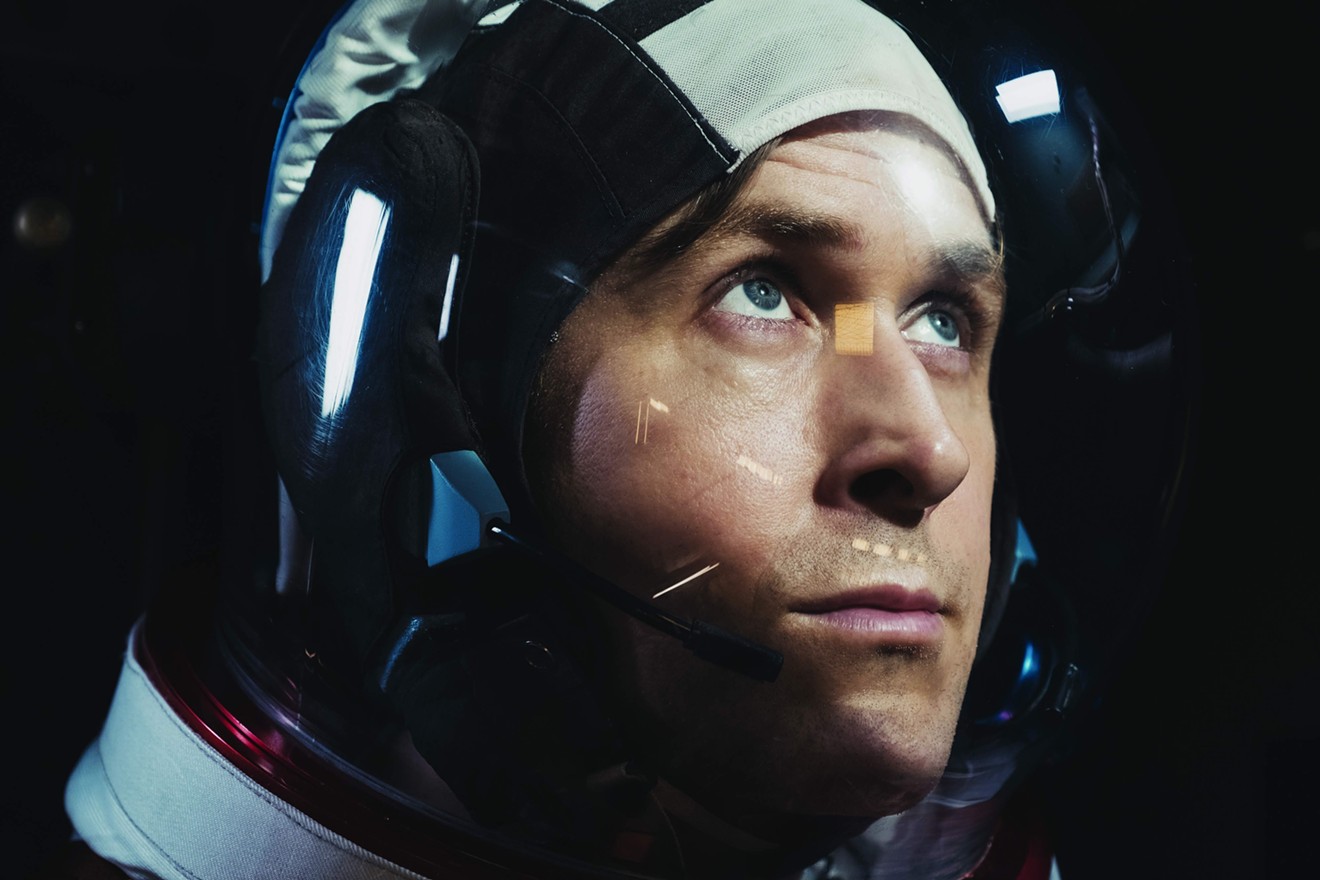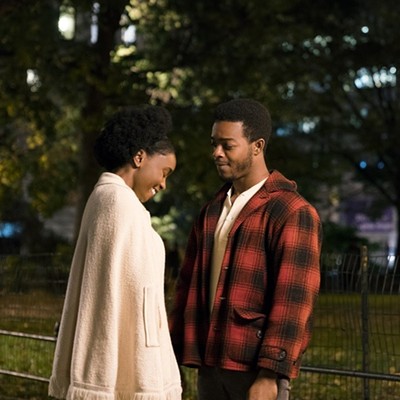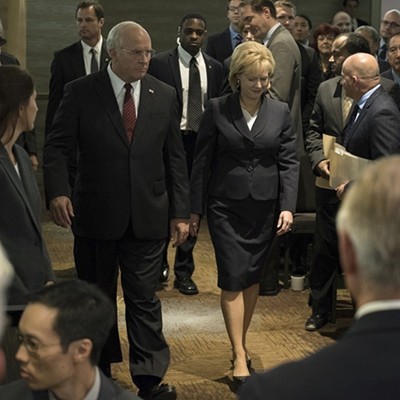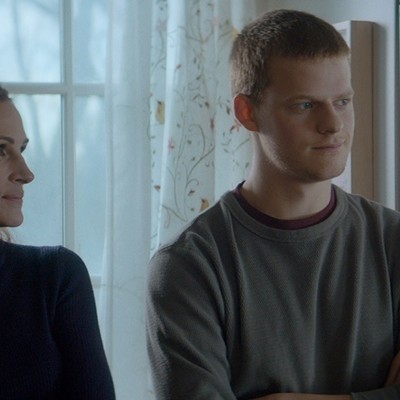The moon is both a memory and a dream-quest in First Man, Damien Chazelle’s epic about the life of Neil Armstrong. A tense, terse drama that plunges us headlong and handheld into the high-risk world of the space race in the 1960s, the film spares few moments for reflection or reverie. Except, that is, when it comes to the moon itself, which functions in the film as a poetic presence — a luminous, distant beacon in the night sky — as well as a forbidding reality, the impossible goal at the end of all those treacherous tests and mind-bending calculations. The whole movie could be seen as an attempt to bring these two extremes together — to make the dream a tactile reality.
Chazelle’s work has been quite varied in tone and style, from the shimmering intimacy of Guy and Madeline on a Park Bench to the brutal psychodrama of Whiplash to the rickety but buoyant spectacle of La La Land. And there is a bit of Whiplash’s relentlessness in First Man as well; you could almost imagine one of that earlier film’s characters making something like this, so predicated on speed and tempo.
But the chief tonal inspiration for First Man seems to be Armstrong himself. Far from the media-friendly hero that everyone wanted, the first human to walk on the moon was a quiet, get-the-job done professional with little time for sentiment or niceties. When we first meet Armstrong (Ryan Gosling), he’s in the middle of an experimental flight in a small, clanging plane, rising above the clouds, trying not to bounce off the atmosphere. He remains stoic throughout the deadly test, as well as through an early tragedy at home: In a brief but heartbreaking series of images, we see his young daughter Karen’s death from cancer. Organized and methodical, Armstrong is constantly on the phone with doctors, his notebook filled with information about the girl’s illness; after she dies, we see him close the notebooks and clear his desk. That may seem like a cold way to represent the most horrific of events, but as filmed by Chazelle and performed by Gosling, the moment is shattering. (Meanwhile, Claire Foy plays Armstrong's wife, Janet, and works wonders with the traditionally thankless part of the Spouse Stuck at Home While Hubby Goes Exploring and Nearly Dies.)
Over the next few years, Armstrong joins the NASA astronaut program as one of its few civilians, facing a battery of tests and missions and failures. Chazelle’s camera remains close, and the director doesn’t always provide the context we might expect, keeping us slightly unmoored and on edge. The abortive 1966 Gemini 8 mission, an attempt to prove two spacecraft could find each other and dock in orbit (a crucial early step in reaching the moon) unfolds with all the whirling, churning disorientation of a nightmare. When our hero’s ship starts to spin out of control, we actually may believe for a moment that Neil Armstrong — one of the most famous men in history, and someone whose ultimate destiny is the closest thing there is to common knowledge — might genuinely burn up in the Earth’s atmosphere.
As the narrative accelerates, Chazelle begins to offer some short, lyrical interludes — brief glimpses of the moon in the night sky, and even briefer flashbacks to young Karen. Such moments probably add up to no more than a few minutes of screen time in a nearly 2½-hour picture, but they stir a subtle emotional undercurrent in the story. We understand that the little girl is never far from Armstrong’s consciousness, and that the moon mission somehow fits into that. The idea is further highlighted by Justin Hurwitz’s lovely score, which sparely doles out a simple, lilting, melancholy riff that develops over the course of the film into a stirring, full-bodied orchestral theme.
Anyway, Spoiler Alert: Neil Armstrong finally gets to the moon. Far from the head-down, forward-charge velocity of the rest of the movie, the lunar sequences are quiet, stately, even meditative. They’ve also been shot in IMAX, and if you can catch First Man in a large-format presentation, do not hesitate to do so. The way Chazelle’s tight, almost claustrophobic images suddenly open up to take in the full breadth of the massive screen is nothing short of breathtaking.
It is also on the lunar surface, with its black chasms and endless, almost abstract expanses of dust, that Chazelle and Gosling allow Armstrong some more outwardly emotional moments. That appears to be a liberty they’ve taken with the material, and they may very well get dinged for it by critics and historians. But in the end, what shines through First Man is the toughness and resilience of the men whose no-nonsense efforts allowed the rest of us to dream.
Support Us
Houston's independent source of
local news and culture
account
- Welcome,
Insider - Login
- My Account
- My Newsletters
- Contribute
- Contact Us
- Sign out
Damien Chazelle’s First Man Tracks the Small Steps Behind That Giant Leap
Bilge Ebiri October 15, 2018 4:00AM

Ryan Gosling stars as Neil Armstrong, a quiet, get-the-job done professional with little time for sentiment or niceties while becoming one of the most famous men in history, in Damien Chazelle’s epic First Man.
Courtesy of Universal Pictures and DreamWorks Pictures
[
{
"name": "Related Stories / Support Us Combo",
"component": "11591218",
"insertPoint": "4",
"requiredCountToDisplay": "4"
},{
"name": "Air - Billboard - Inline Content",
"component": "11591214",
"insertPoint": "2/3",
"requiredCountToDisplay": "7"
},{
"name": "R1 - Beta - Mobile Only",
"component": "12287027",
"insertPoint": "8",
"requiredCountToDisplay": "8"
},{
"name": "Air - MediumRectangle - Inline Content - Mobile Display Size 2",
"component": "11591215",
"insertPoint": "12",
"requiredCountToDisplay": "12"
},{
"name": "Air - MediumRectangle - Inline Content - Mobile Display Size 2",
"component": "11591215",
"insertPoint": "4th",
"startingPoint": "16",
"requiredCountToDisplay": "12"
}
,{
"name": "RevContent - In Article",
"component": "12527128",
"insertPoint": "3/5",
"requiredCountToDisplay": "5"
}
]
KEEP THE HOUSTON PRESS FREE...
Since we started the Houston Press, it has been defined as the free, independent voice of Houston, and we'd like to keep it that way. With local media under siege, it's more important than ever for us to rally support behind funding our local journalism. You can help by participating in our "I Support" program, allowing us to keep offering readers access to our incisive coverage of local news, food and culture with no paywalls.
Trending Film
- International Film Festival 2000
- It’s Sadly Kind of Perfect That New Season of GLOW Is Stolen by Marc Maron
- Made in Houston
-
Sponsored Content From: [%sponsoredBy%]
[%title%]

Don't Miss Out
SIGN UP for the latest
news, free stuff and more!
Become a member to support the independent voice of Houston
and help keep the future of the Houston Press FREE
Use of this website constitutes acceptance of our
terms of use,
our cookies policy, and our
privacy policy
The Houston Press may earn a portion of sales from products & services purchased through links on our site from our
affiliate partners.
©2024
Houston Press, LP. All rights reserved.




